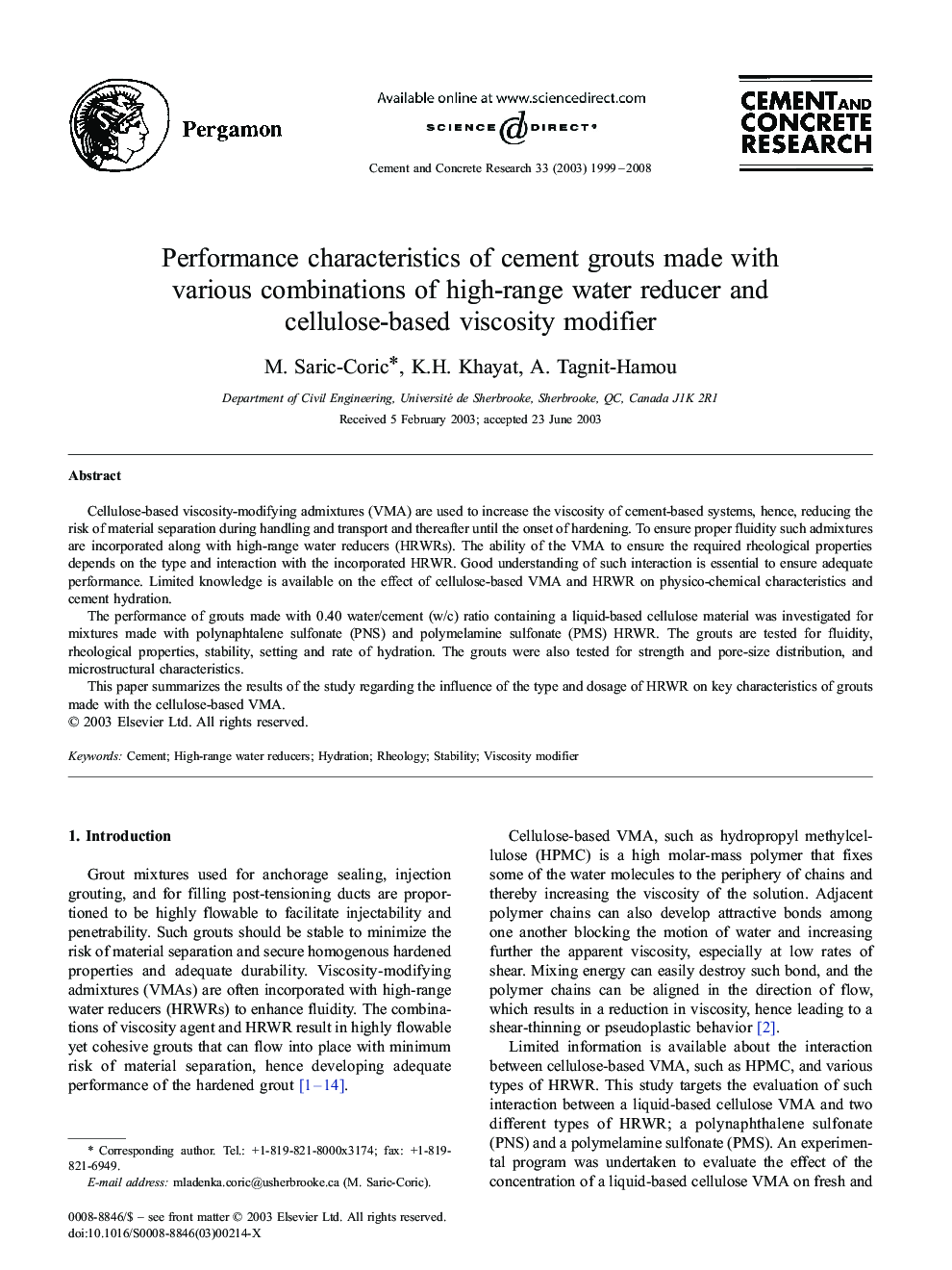| Article ID | Journal | Published Year | Pages | File Type |
|---|---|---|---|---|
| 1458245 | Cement and Concrete Research | 2008 | 10 Pages |
Cellulose-based viscosity-modifying admixtures (VMA) are used to increase the viscosity of cement-based systems, hence, reducing the risk of material separation during handling and transport and thereafter until the onset of hardening. To ensure proper fluidity such admixtures are incorporated along with high-range water reducers (HRWRs). The ability of the VMA to ensure the required rheological properties depends on the type and interaction with the incorporated HRWR. Good understanding of such interaction is essential to ensure adequate performance. Limited knowledge is available on the effect of cellulose-based VMA and HRWR on physico-chemical characteristics and cement hydration.The performance of grouts made with 0.40 water/cement (w/c) ratio containing a liquid-based cellulose material was investigated for mixtures made with polynaphtalene sulfonate (PNS) and polymelamine sulfonate (PMS) HRWR. The grouts are tested for fluidity, rheological properties, stability, setting and rate of hydration. The grouts were also tested for strength and pore-size distribution, and microstructural characteristics.This paper summarizes the results of the study regarding the influence of the type and dosage of HRWR on key characteristics of grouts made with the cellulose-based VMA.
